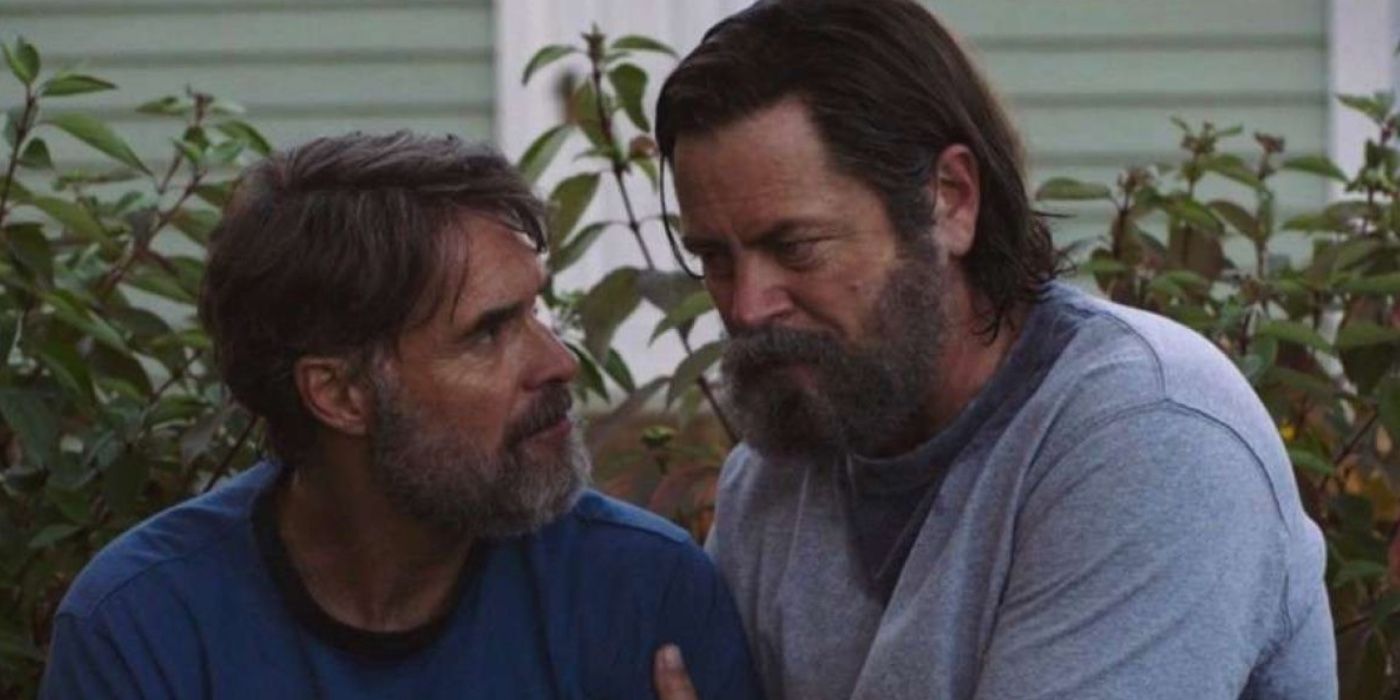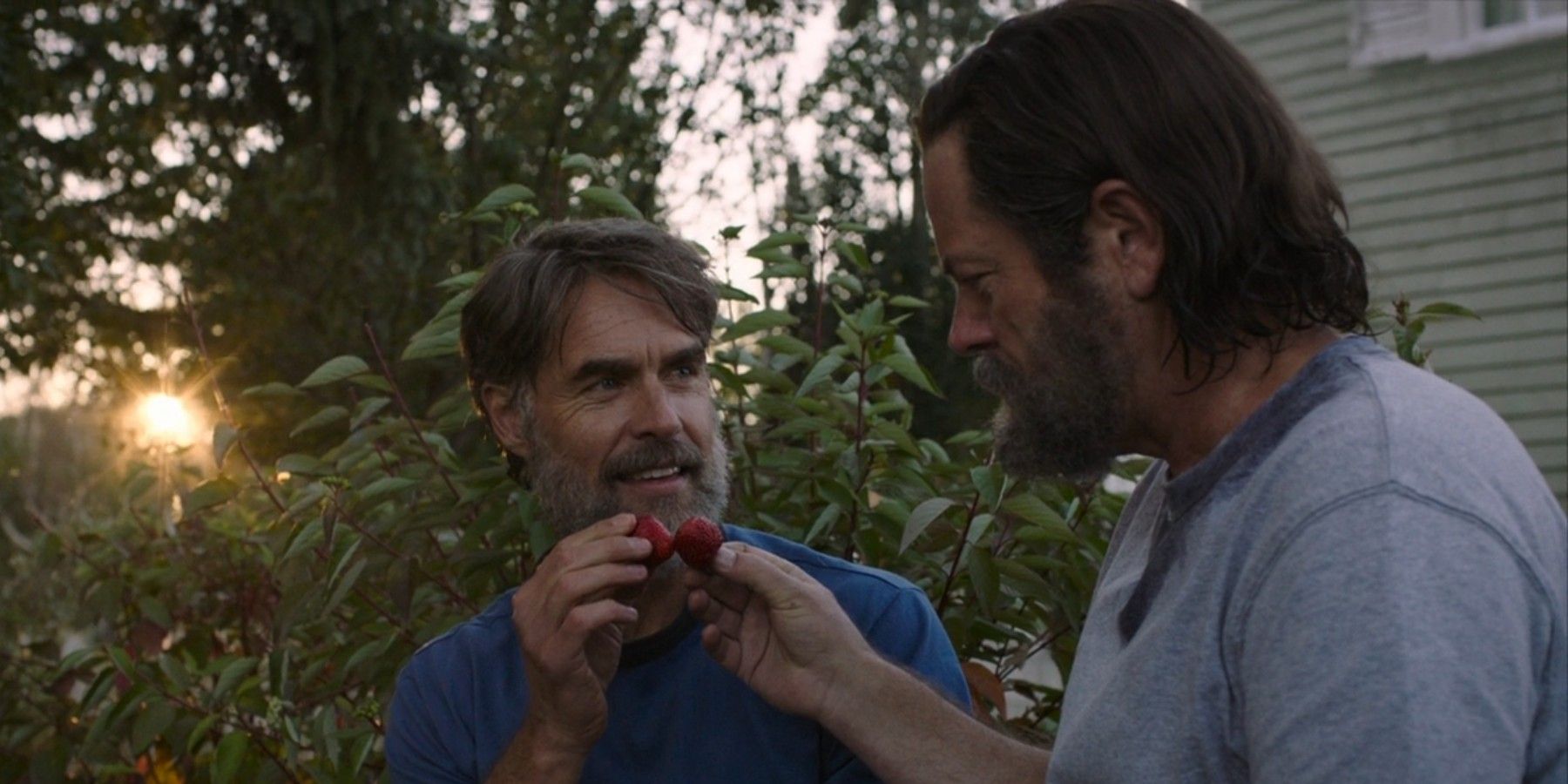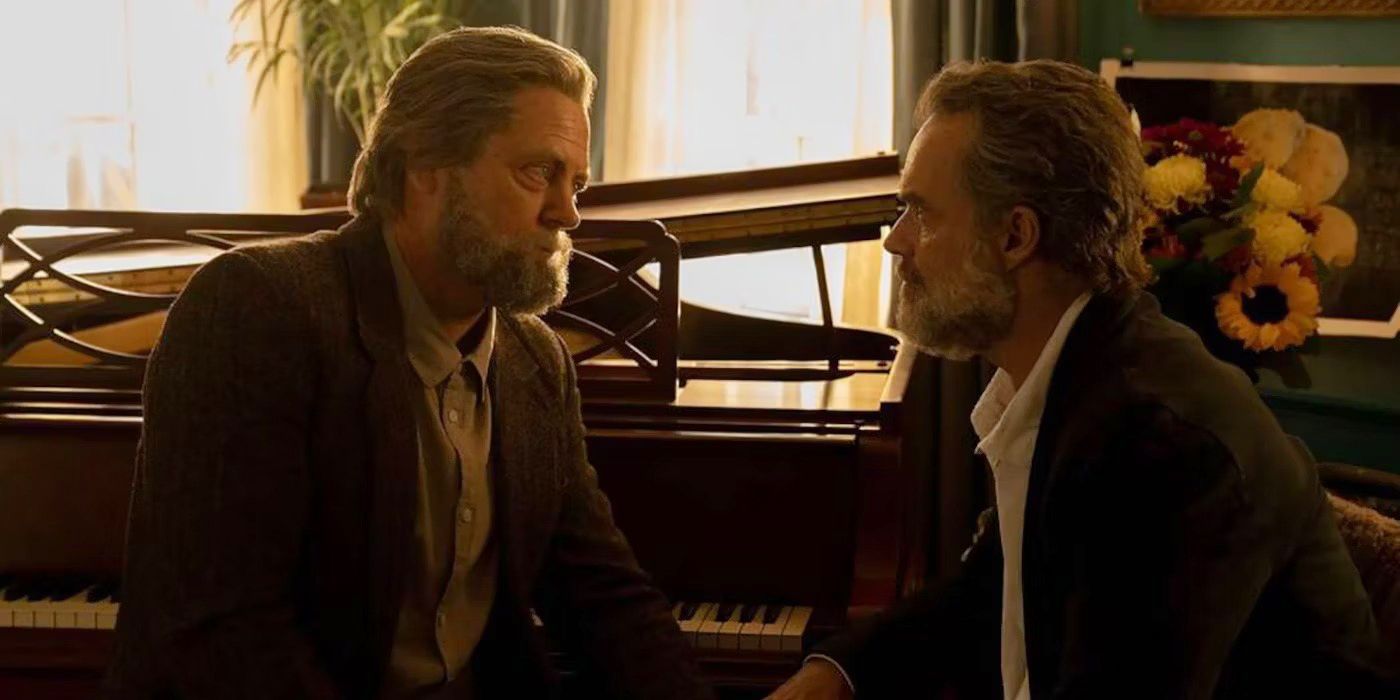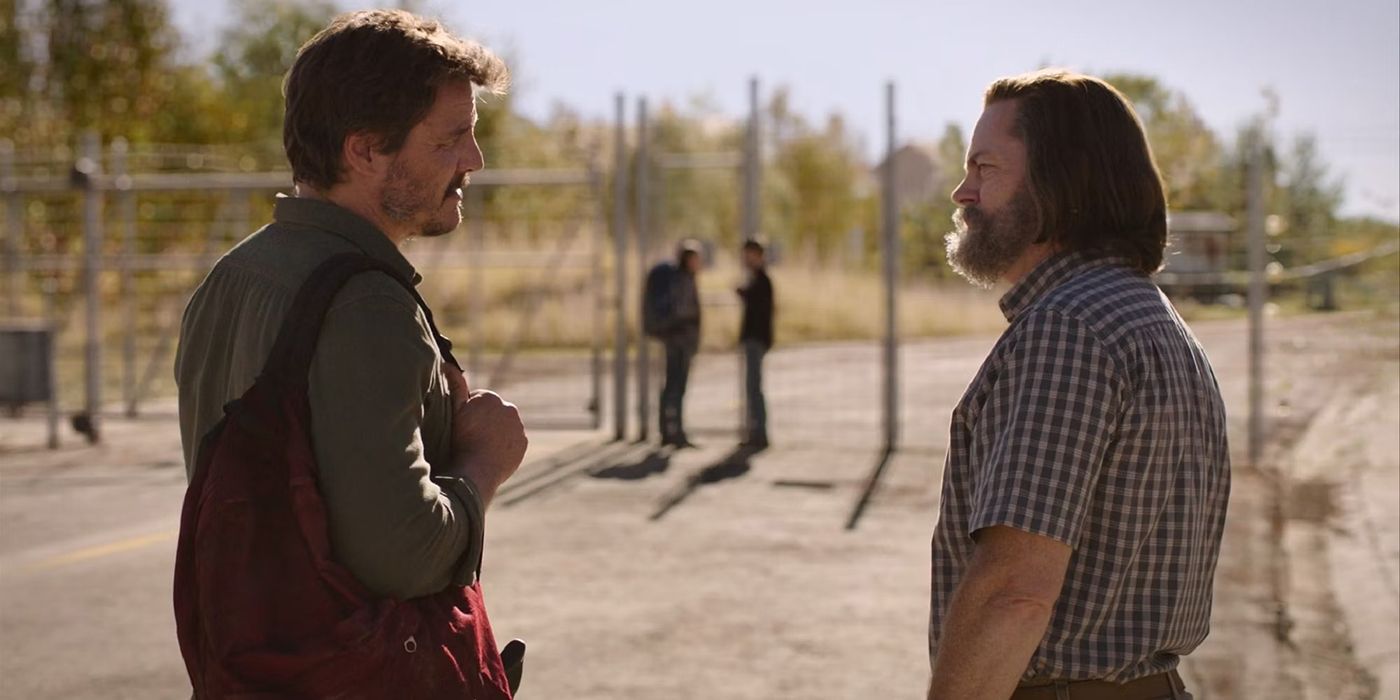The following contains spoilers for The Last of Us Season 1, Episode 3, "Long Long Time," which debuted Sunday, Jan. 29 on HBO. This article contains discussion of suicide.
The Last of Us is easily HBO's smash hit of 2023. Apart from being a largely faithful adaptation of The Last of Us video game franchise, the show itself is well-produced. From the perfect casting of TV superstar Pedro Pascal as Joel Miller, the well-crafted story, the eery soundtrack, the sharp cinematography to the game's voice actors securing roles in the TV series, The Last of Us has rightfully earned its high acclaim.
Continuing the show's trajectory of earning high praise is Episode 3, "Long Long Time," which introduces the characters of Bill and Frank. When discussing the changes made to their storyline for the TV adaptation, The Last of Us co-creator, Craig Mazin, sought to avoid the Bury Your Gays trope. While the episode's script does reflect the conscious choice to give Bill and Frank more agency than they were originally given in the video game, it sadly fails to subvert the trope for one reason: queer characters meeting tragic ends in mainstream film and television narratives is still the norm.
What The 'Bury Your Gays' Trope Actually Is
As defined by TV Tropes, Bury Your Gays is characterized by a recurring trend in narratives of treating queer characters as more expendable than their heterosexual counterparts. Not only are queer characters far more likely to die in stories than their heterosexual counterparts, but their deaths are often treated as "exceptional in [their] circumstances." The "exceptionality" of queer deaths has led to variations of the Bury Your Gays trope, including "Gay Guy Dies First", "Gaynst-Induced Suicide", "Homophobic Hate Crime", and just as popular is the "Tragic AIDS Story."
For Episode 3, Mazin specifically aimed to avoid one problematic aspect of the trope, and that is the treating of queer characters as more expendable than their heterosexual counterparts. Per his interview with GQ, Mazin felt Bury Your Gays was a case of treating gay characters as an instrument for straight people, "My feeling about that trope is that it's really about gay characters dying so that straight characters can mourn them and improve their lives and move on." Mazin's understanding of the trope is similar to Women in Refrigerators in which a woman dies to benefit the storyline of a male character.
How The Last of Us Avoids Treating Queer Characters as Expendable
In execution, Mazin's script for Episode 3 fully develops Bill and Frank as characters and gives them a carefully thought out romance story. At the start of the Cordyceps pandemic, Bill is written as misanthropic and avoids evacuation. Without the presence of other people, Bill enjoys newfound freedom that allows him to fully live his life on his own terms and proves to be very resourceful by himself. His misanthropy doesn't last long after he meets Frank, who falls into one of his booby traps.
After inviting a starving Frank for a meal, Bill decides to let him stay after they bond over their love of Linda Ronstadt's music. Eventually, the two men fall in love, and together, they survive the Cordyceps apocalypse for two decades, even meeting Joel and Tess in the process. With the careful attention Mazin gives the queer couple, it seems as though Bill and Frank would have a happier ending than their video game counterparts. Whereas the game depicts Frank committing suicide after getting infected with the mutated Cordyceps fungus, Frank doesn't get infected this time around. Unfortunately, he still ends up with a different fatal illness, and this is where Mazin fails to subvert the Bury Your Gays trope.
The Last of Us Fails to Consider the Sociocultural Context of 'Bury Your Gays'
Instead of opting to keep Bill and Frank alive to meet with Joel and Ellie in the present like in the game, the episode ends with two dead queer men instead of one. Not only is this not an improvement from the game, but the episode's story does very little to change the circumstances leading their deaths. In this case, Frank comes down with a neurological disease (either multiple sclerosis or amyotrophic lateral sclerosis per the show's official podcast), which restricts his mobility to the point of needing a wheelchair to move around.
When Frank's disease progresses enough that it severely impacts his day-to-day functioning, he instructs Bill to end his life. Bill does as Frank asks, but instead of letting him die alone, he decides to join in him death in a joint suicide. By the time Joel and Ellie arrive at Bill and Frank's home in the present, both men are dead and rotting in their bedroom. Bill even leaves a suicide note instructing Joel (and Tess, whom he's unaware died in Episode 2) to take all the supplies they need from his home. While the execution of Bill and Frank's joint suicide still preserves their agency as characters, it barely avoids benefiting Joel and Tess's storyline and does nothing to break the trend of queer characters inevitably meeting a tragic fate in mainstream narratives.
By still deciding to kill off Bill and Frank at the end of Episode 3, Mazin fails to acknowledge the full sociocultural context that informs the perpetuation of Bury Your Gays. To start with, the trope is nearly as old as film and television itself. In fact, it was a point of discussion in the 1995 documentary The Celluloid Closet, in which various queer members of the film industry discussed the impact Bury Your Gays had on their lives. One writer, Armistead Maupin, commented, "I felt that something dreadful was going to happen to me. Something that I wouldn't be able to turn back once I actually had sex with another man. And that the end of that road would be suicide. And I got that impression from the movies."
How The Last of Us Could've Fully Subverted 'Bury Your Gays'
The script by Mazin by no means sends the message that Bill and Frank committed suicide because of their sexuality. However, the episode still exists in a decade in which queer people still don't have equal representation in mainstream media to their heterosexual counterparts. When queer characters are given a mainstream presence, even in 2023, the number of storylines that depict them living do not yet outnumber the ones where they die tragically. This isn't helped by the fact LGBTQIA shows are more likely to be cancelled as 2022 aptly showed. Thus, the episode is hardly a triumph against the disturbing history of queer deaths in both film and television.
If Mazin's goal with Bill and Frank's story was to subvert the Bury Your Gays trope completely, one crucial change to his script would've easily accomplished that: keep both men alive in recurring roles. This would not have deviated too much from the game and would've even improved the game's storyline by changing the way Joel and Ellie interact with Bill and Frank. Given the progressive changes Mazin made to the characters already, there was no need to give Frank a fatal neurological disease that put him back on track to becoming the next gay man to commit suicide in a mainstream story. By removing the reason for Frank to contemplate death, the episode would've changed the message for the better.




